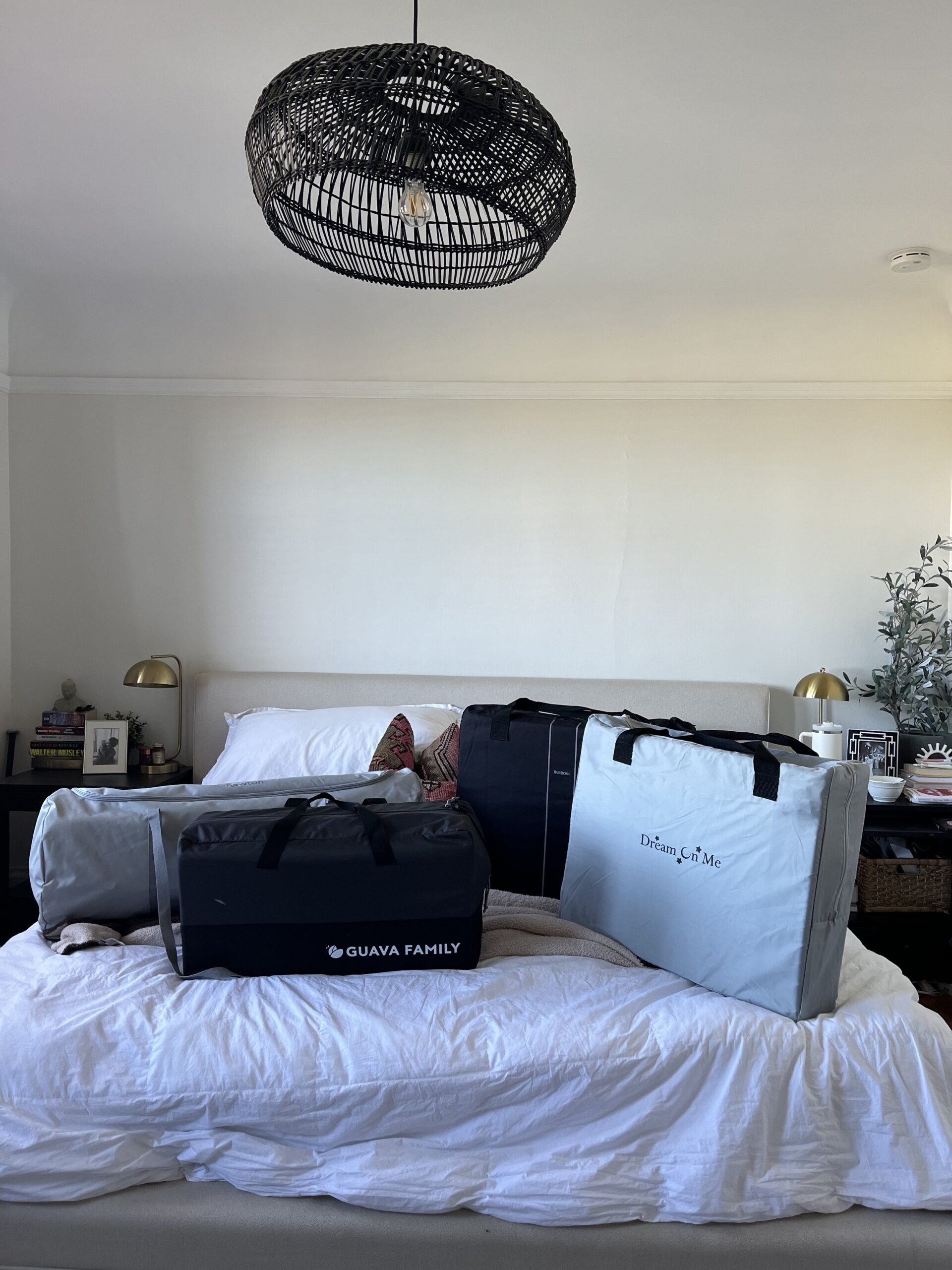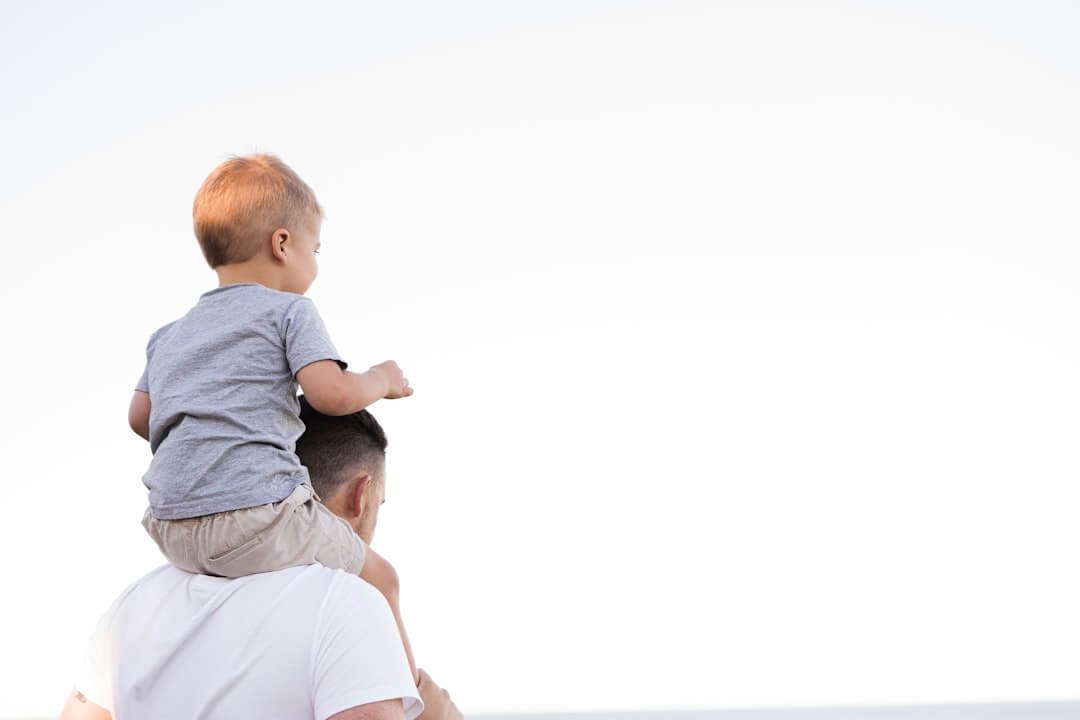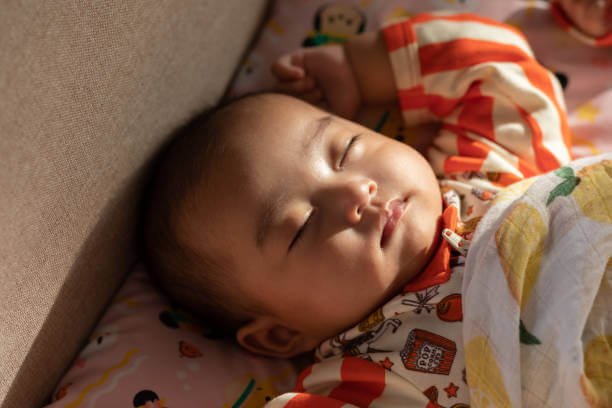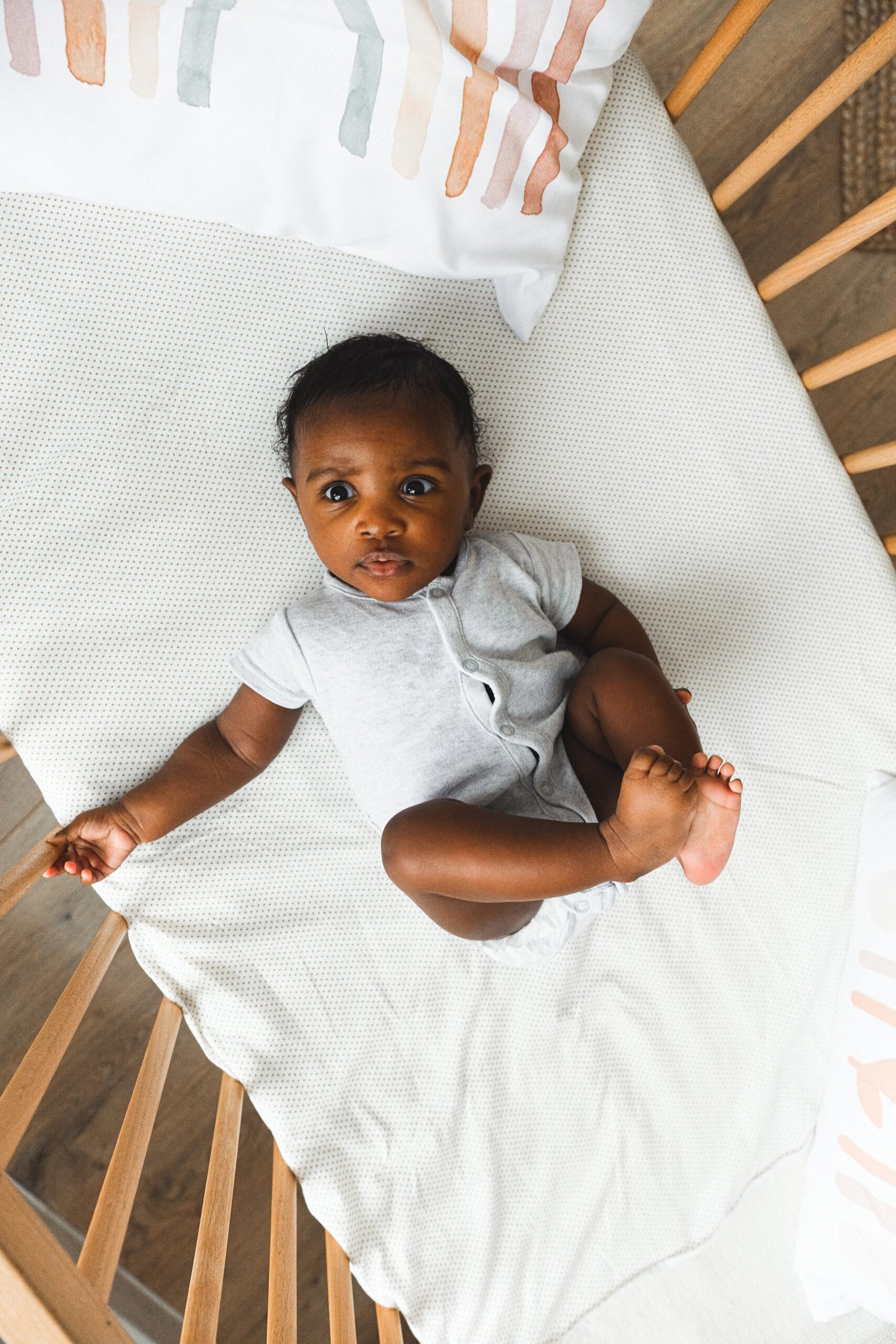I'm Rachael
Mom of 3 & Baby Sleep Expert with Big Sis Energy
& I’VE DONE ALL THE RESEARCH FOR YOU ALREADY.
Better sleep for the entire family
BROWSE COURSES
hey!
Screen Time for Babies and Toddlers (for Real Life)
>
“It’s not necessarily the screen time that’s terrible, but the fact that it takes the place of the real work of childhood, which is play and exploration.”
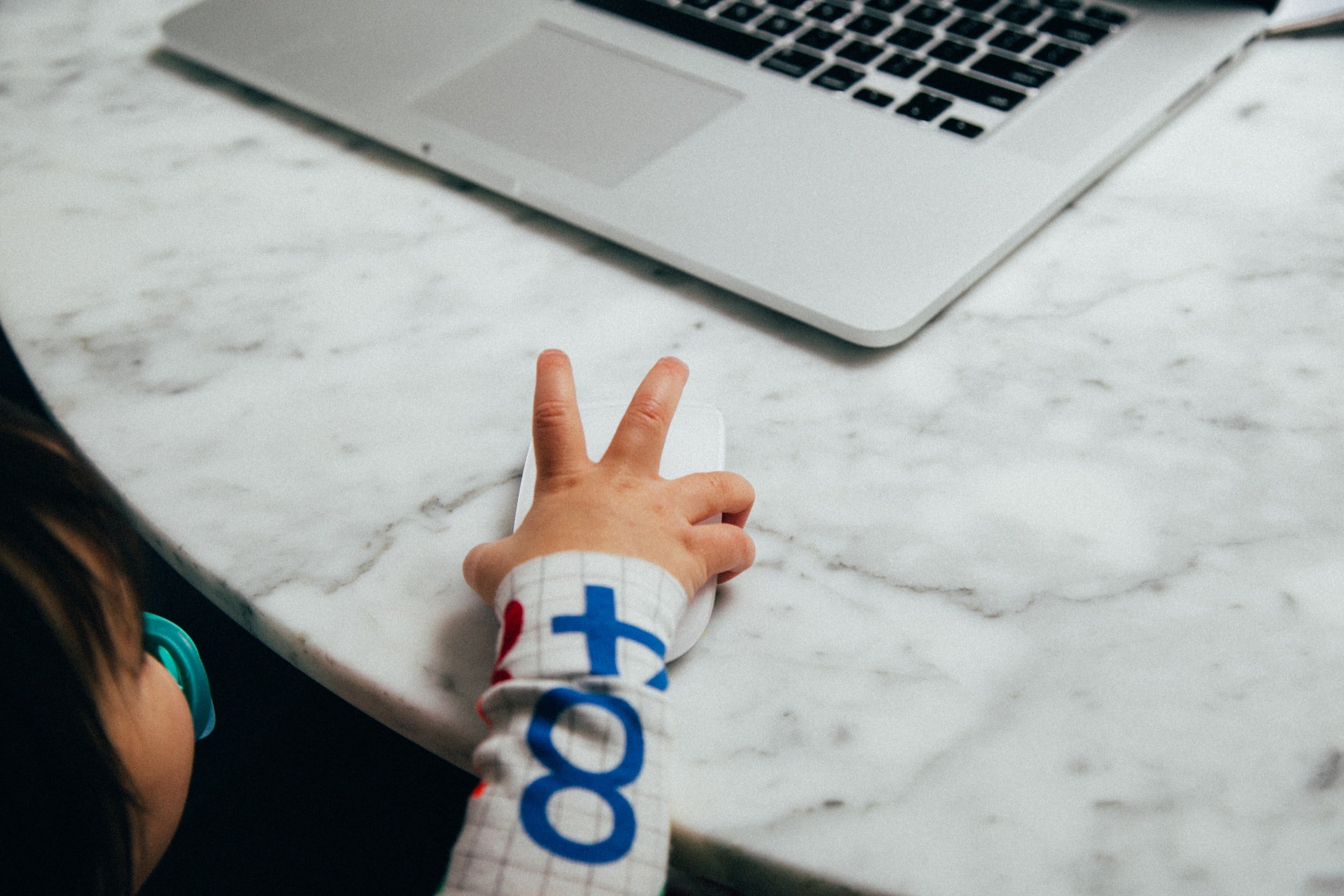
Screen time. It’s become a huge hot-button topic over the last several years.
The current coronavirus pandemic has made the issue of screen time come to the forefront of conversation even more so, as working parents now need to find ways to entertain their children who would normally be in childcare or school. But even before the pandemic, more kids than ever before regularly watched programs on screens—TVs, tablets and phones.
The truth is that many babies are now technologically proficient by their second birthdays. Countless children as young as two or three have their own personal devices. And, according to Juan Pablo Hourcade—Associate Professor of Computer Science in the University of Iowa College of Liberal Arts and Sciences and lead author of a study done there about this topic—more than half of one-year-olds and 90% of two-year-olds have a moderate ability to use a tablet. If you have young children or toddlers, you’re probably well aware that they’re sometimes capable of maneuvering our phones and tablets better than we are!
However, it’s important to note that most experts agree that screens should not even be introduced until a child is 18 months old at the very earliest. Even then, exposure should be very minimal. But let’s be honest—most of us rely on screens for a fair part of our day, especially if we work from home or have multiple children. I myself am one of these parents and have to say that we’ve used the screen as a babysitter much more in 2020-21 than I’d care to admit.
I decided to dig into the research to find out—just how bad is screen time, really? I know I watched a ton of TV as a kid, and I think I turned out pretty well (for the most part!). So let’s dive in.
There are a few main concerns when it comes to screen time in general:
-
Negative impact on a child’s cognitive development: There are many studies that have found that children who have access to a lot of screen time (especially unsupervised) tend to have poorer scores on language and thinking tests. One study shows that any screen time, even just 15 minutes a day, can have major implications for sleep and brain development. This study found that for each quarter-hour of time on a tablet, there could be a loss of four minutes of sleep.
-
Negative impact on a child’s physical development: Screen time can also impact a child’s physical development. Studies have shown that high screen time is correlated with higher toddler BMI.
-
It can be highly addictive: The addictive part of screen time can’t be ignored. Even parents who work in tech in Silicon Valley are starting to catch on to this and instituting no-screen policies for their own kids due to its inherently addictive nature. They believe that the benefits of screens as a “learning tool” are overblown, and the risks for addiction and stunting development are high.
-
The risks of blue light: When you’re in the sun, you’re exposed to red, orange, yellow, green and blue rays. But when you’re exposed to a screen—whether it’s a TV, tablet or phone—you just get the blue light. While light of any kind can suppress the secretion of melatonin, blue light at night does so more powerfully because this artificial light inhibits natural melatonin production. This is the reason why using blackout curtains in your nursery is so important to help with your child’s sleep. In addition, it turns out that young children are actually more sensitive to blue light than adults. According to a recent National Eye Institute-funded study, childrens’ eyes absorb more blue light from screens than adults’ eyes.
With all that being said, many parents still say that exposing their children to screen time is the only way they can get anything accomplished! Especially in today’s world, some screen time might be necessary. So, let’s take a look at some best practices.
-
The AAP recommends no screen time for children younger than 18 months. This is because children under 18 months cannot translate what they perceive on a two-dimensional screen into the physical world. Opting to FaceTime, Zoom or Skype with family and friends, however, is considered to be OK—even for the youngest children. Research has found that babies as young as six months can understand the difference and can tell that others are responding in real time. In fact, it’s actually the preferred way for babies and toddlers to interact with loved ones (if they can’t be face to face, of course). “A growing body of research shows that babies appear to thrive on real-time video interactions. Researchers have found that toddlers are more comforted by their mothers via video chat than they are through audio alone. And video chat appears to be, conceptually, much easier for babies to grasp than a phone conversation.”
-
For children older than 18 months, screen time should still be minimal—about an hour per day at most. Many shows are just 20-minute episodes, meaning that parents can break up that one hour into a few strategically-placed chunks in their day.
-
When you can, use the family TV instead of a phone or tablet. If you give your child their own device, they will naturally feel some ownership over it, which can lead to bigger meltdowns when it’s time to stop watching. In addition, the TV is not portable and they can’t hold it in their hands. This means you don’t have to take it away!
-
Content matters. If you can’t monitor what your child is watching all the time, at least ensure that it’s quality programing with some educational value. Letting your child surf YouTube unsupervised is definitely not ideal. Some of my favorites children’s TV shows are Trash Truck, If You Give a Mouse a Cookie, Bug Diaries, and Bluey. I really appreciate @Jerricasannes take on all things kid shows! She even has a free TV detox email program!
-
When you can, interact with your child around the screen. Can you sit and watch with them once in a while so you have some context for what they’re watching? Can you discuss things they’re seeing by prompting questions like, “Oh, Daniel looks sad! Why do you think that is?” This can also help build language both in the moment and later, when the screen is away. You’ll also know the characters’ names, general plot lines, etc. in case your child wants to talk about them (they will!)—and this can be a great opportunity for building both language skills and emotional intelligence.
-
Researchers say that babies and toddlers who have more access to screens develop lower communication and cognitive abilities because screen time takes away from the experiences that genuinely support learning. So, it’s not necessarily the screen time that’s terrible, but the fact that it takes the place of the real work of childhood, which is play and exploration. It’s vital that children are able to play and explore every day, and not just sit in front of screens.
If this information has convinced you to decrease your child’s screen time, it’s important not to simply take away the tablet, phone or TV immediately. Gradually minimize the amount of time he or she can be in front of a screen—and follow these five steps for avoiding tantrums when screen time is over.
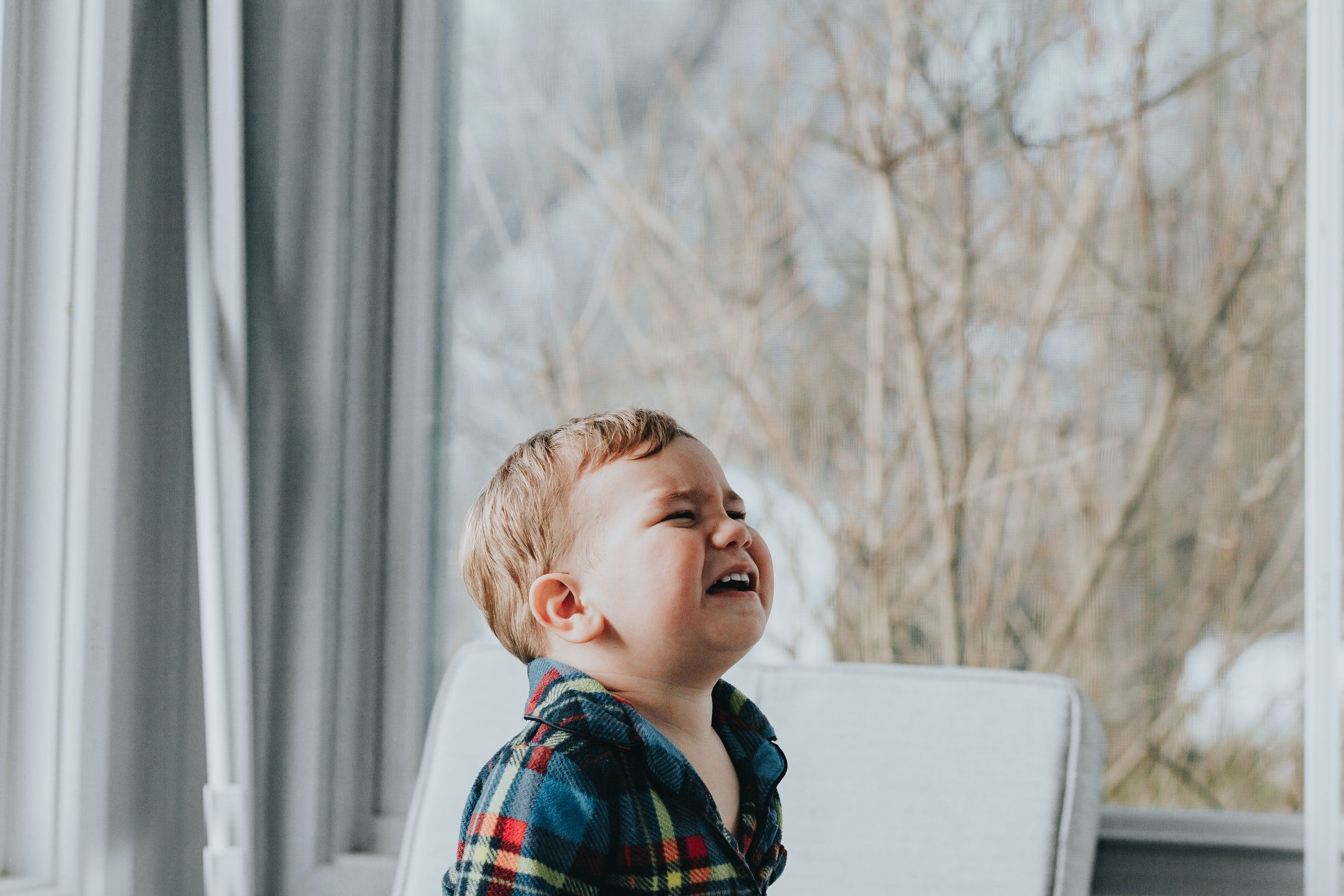
-
Warn your child before screen time is up. You can use a visual timer or simply give a verbal warning when a few minutes remain.
-
Offer a countdown. Say, “TV off in 3, 2, 1… See you tomorrow, Bluey!”
-
Allow your child to turn off the TV themselves, giving them some power. If they refuse, say, “I can press the button or you can press it. Your choice!”
-
Empathize with their feelings of sadness or anger—while still enforcing the boundary. It might sound like this: “I hear you’re really upset that it’s time to be all done. I get sad when I turn my favorite show off too. Would you like a hug?”
-
Shift to another preferred activity. You might say, “Bye bye, Bluey! It’s time for lunch now. Come sit with me!” Or you could say, “TV is all done for today. Now what should we play? Trains or farm animals?!”
Before we wrap up, let’s take a look at some key takeaways about screen time for kids.
-
The American Academy of Pediatrics (AAP) recommends no screen time for babies under 18 months.
-
For kids 18 months and older, the AAP says that some screen time is fine. However, one hour per day is the suggested limit.
-
For some families, a no-screen policy is actually easier than enforcing a limitation. Setting time limits or restricting screens, because of their highly addictive nature, is sometimes much more difficult and results in many more tantrums than just never allowing it in the first place. Setting up things like toy rotations and open-ended independent play projects for your child can work just as well at keeping them occupied (though it can take practice especially for really little ones!).
-
Don’t allow your child to look at bright screens beginning two to three hours before bedtime. Remember that blue light can interrupt sleep. It’s also a good idea to use dim red lights for night lights in your child’s bedroom, and dim any bright overhead lights before you start your bedtime routine.
Don’t beat yourself up for allowing some screen time in your house. Just keep in mind the best practices above, and you—and your children—will reap the benefits.
Featured
All my tips for travling with little ones, plus where we stayed, where we ate, what we did, what we wore while on the beautiful island of Kauai.
Choosing the right time to leave your baby is a super personal choice. Some babies and moms feel comfortable at a much earlier stage than others and finding the right time for you is important. These are my tips for prepping to leave your baby overnight.
Travel crib and play yards can provide a safe and comfy space for your little one to hang out or sleep. But which travel crib is best? In this blog post, Rachael reviews 6 different popular play yards and compares each one based on different criteria…
binge reads
We think you'll love these
You deserve to the
baby stage, not just "survive it."
And you DON'T have to sacrifice your values, ignore your instincts, or force yourself to follow a method you don't align with just to get your baby back to sleep.
I’m here to help you create a restful, sustainable sleep environment that honors both your baby’s needs AND your own (without the stress OR the guilt!) because, no, you don’t have to choose between the two.
enjoy!
BABY SLEEP COURSES →
BABY SLEEP CONSULTS →
Wish you could help your baby sleep better without resorting to sleep training? Download my FREE guide to a good night’s sleep and learn 8 simple, science-backed tips for supporting your child’s needs.
Traditional sleep training methods don’t have to be your solution to better sleep.
SLEEP TRAINING ISN’T THE ONLY WAY TO GET GOOD SLEEP
Hey, I'm Rachael and Hey, Sleepy Baby is for parents who want to get their nights back, without sleep training their babies.
NO ONE TOLD US POD
explorING the untold truths of parenting


